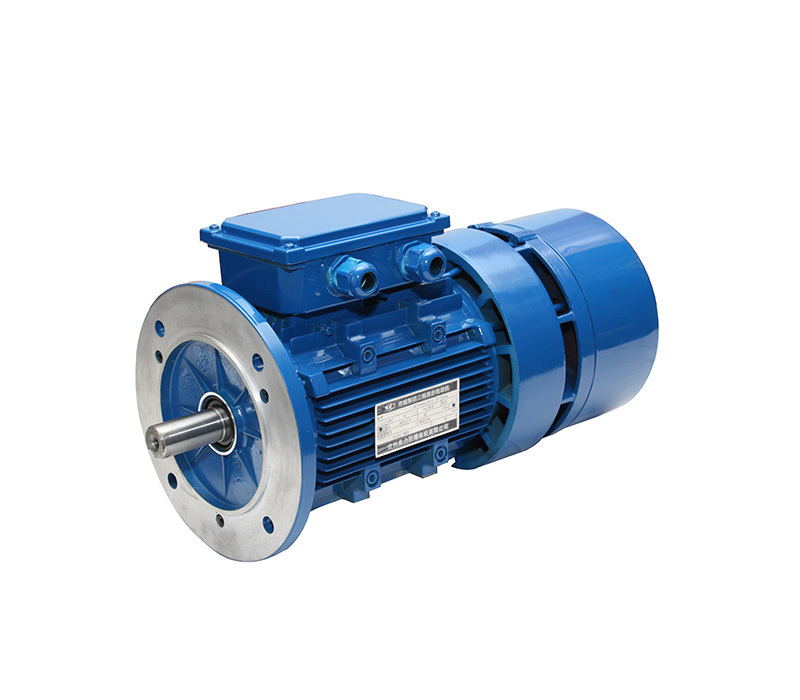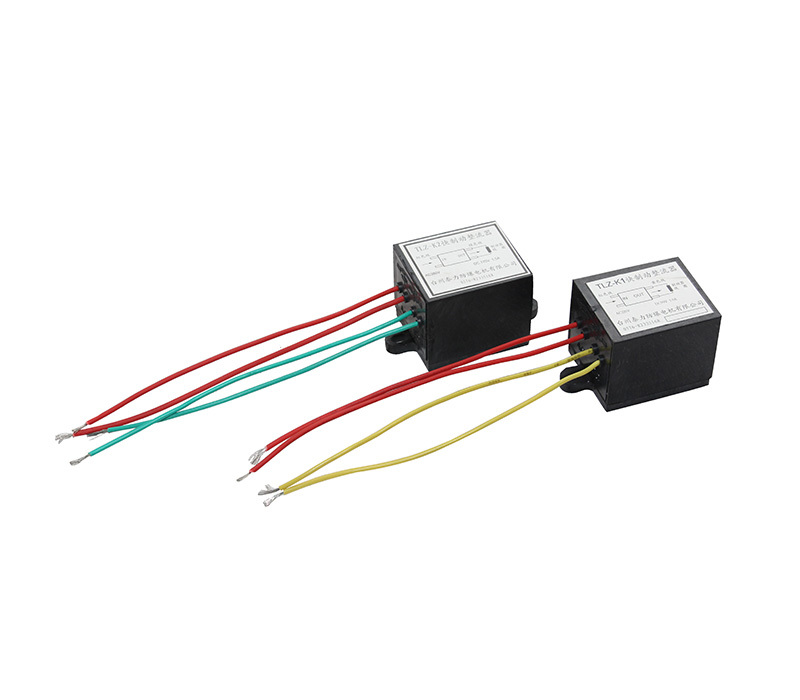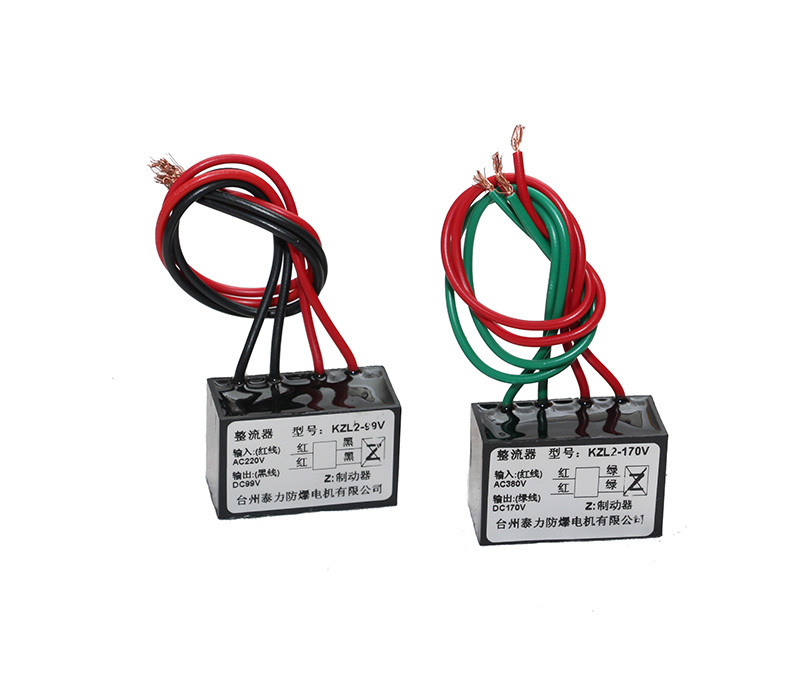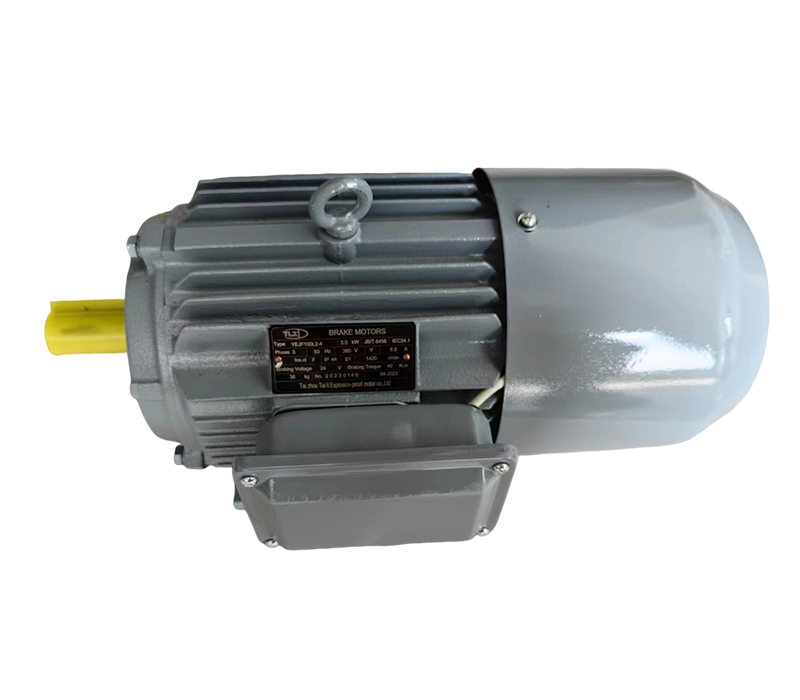YEJA series AC electromagnetic braking three-phase asynchronous motor
The AC brake has a fast starting response, short braking time, and adjustable reliable braking torque
Product serial number:
Category:
Keyword: YEJA series AC electromagnetic braking three-phase asynchronous motor
- Product Description
- Technical parameters
- Appearance and installation dimensions
- Wiring method
- Gap and torque adjustment
- Common faults and troubleshooting
- Sample and video download
-
- Commodity name: YEJA series AC electromagnetic braking three-phase asynchronous motor
Product Introduction
The YEJA series AC electromagnetic braking three-phase asynchronous motor is composed of two major parts: a general standard Y2 series three-phase asynchronous motor and an AZML series three-phase AC electromagnetic brake. The motor's rear shaft is connected to the brake's friction disc via a spline. The electromagnet is fixed to the rear end cover of the motor, and it is a power-off braking type.
This series of products has obtained ISO9001 system certification and CCC product certification.
Application
The YEJA three-phase AC braking motor is suitable for environments without flammable, explosive, or corrosive gases. It is especially suitable for various machinery requiring quick braking, positioning, and preventing slippage, such as elevators, transportation machinery, printing machinery, packaging machinery, textile machinery, ceramic machinery, electroplating production lines, and transmission machinery matched with reducers.
Working Principle
When energized, the electromagnet generates a strong electromagnetic force to attract the armature plate, compressing the brake spring and allowing the armature plate to release pressure on the brake disc, enabling the motor to rotate freely. When de-energized, the brake spring pressure presses against the armature plate, firmly pressing it against the brake disc, generating a strong frictional braking torque to quickly brake the rotating motor and achieve accurate positioning.
Product Features
1. The protection level of this series of products reaches IP55;
2. The motor cooling method is IC411 (self-ventilated);
3. The AC brake has been carefully designed. In addition to the energized parts being encapsulated in an epoxy resin shell, when assembling with the motor, the brake is installed in a completely sealed structural component, effectively preventing cotton yarn, paper scraps, dust, oil stains, iron filings, and powder from entering the brake, thus extending its service life;
4. The AC brake has the advantages of fast starting response, short braking time, and adjustable reliable braking torque;
5. It has a flexible manual release device, with self-locking or temporary manual disengagement optional (Figure 1 shows manual disengagement);
6. The AC brake and motor use the same power supply voltage, without a rectifier for AC/DC conversion, avoiding AC/DC conversion and making it convenient to use;
7. The motor insulation class is B, F, and the brake insulation class is F;
8. It adopts a dual-position terminal box, with the motor and brake using independent terminal boards;
9. The motor installation dimensions and power ratings fully comply with JB/T6456 industry standards and IEC-72 international standards;
10. Sizes 63~71 are aluminum shell motors, 80~160 are aluminum shell or cast iron shell motors, and 180 is a cast iron shell motor.
Operating Conditions
1. Altitude not exceeding 1000m;
2. When the average minimum monthly temperature is not higher than 25℃, the average maximum relative humidity in the wettest month is 95%;
3. Ambient temperature: -15℃~40℃;
4. Operating mode S1 (continuous operation);
5. Rated voltage AC 380V 50Hz, different voltages and frequencies can be designed and manufactured separately.
-

-
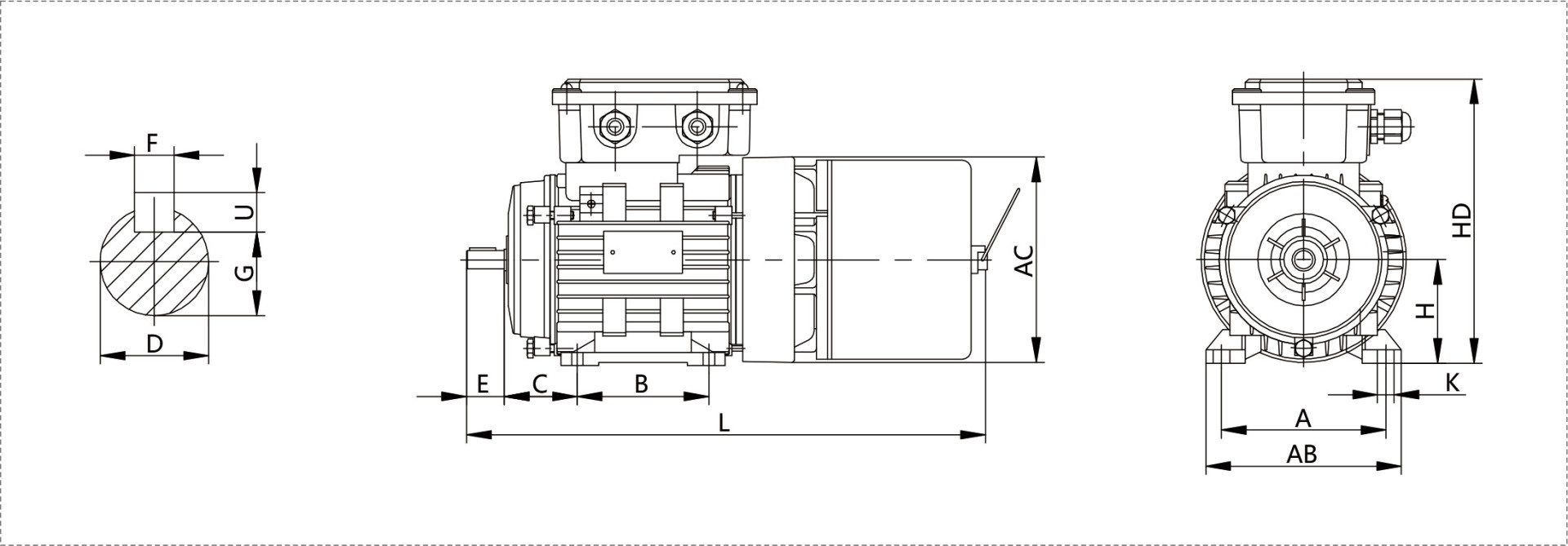
Electric motor with B3 type mounting base and feet, and end cap without flange


Electric motor with B5 type mounting base without feet, and end cap with flange (with through hole) R is the distance from the flange mating surface to the shaft shoulder
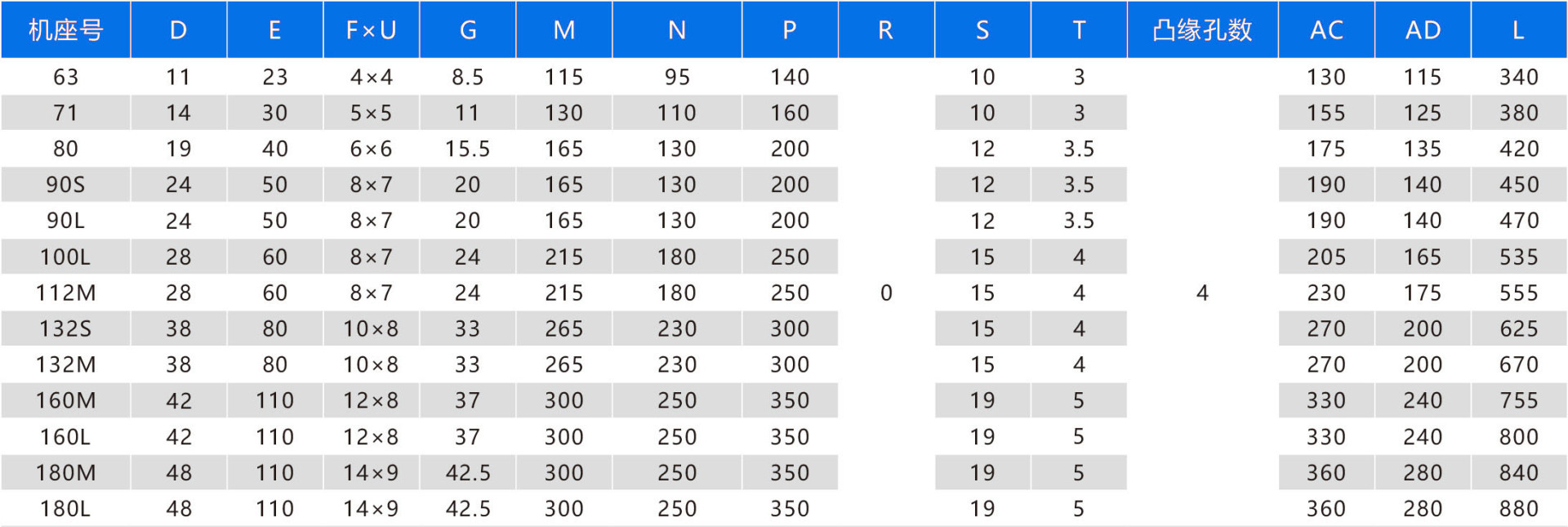

Electric motor with B14 type mounting base without feet, and end cap with flange (small flange with screw holes) R is the distance from the flange mating surface to the shaft shoulder

-
1. For the motor section, motors with a power of 3kW and below use a Y connection when leaving the factory, while others use a Δ connection;
2. For the brake section, motors with a power of 100kW and below use a Y connection when leaving the factory, while others use a Δ connection;
-
1. Air gap value (δ) of the brake fitted in motors of each specification in this series

2. Air gap inspection
As shown in Figure 1, the moving distance between the armature 2 and the electromagnet 6 is called the air gap (δ). The normal operating air gap (δ) does not exceed the specified air gap value. The motors are adjusted to the initial operating air gap range when they leave the factory. After running for a period of time, the air gap value increases due to friction pad wear, which will affect the normal engagement and braking effect of the brake. Therefore, after the motor has been used for a period of time, select the feeler gauge size according to the maximum air gap value to check the size of the air gap (δ). During the inspection, the feeler gauge of the selected size can be directly inserted into the air gap (δ). If it can be inserted, it indicates that the air gap (δ) is too large and needs to be adjusted.
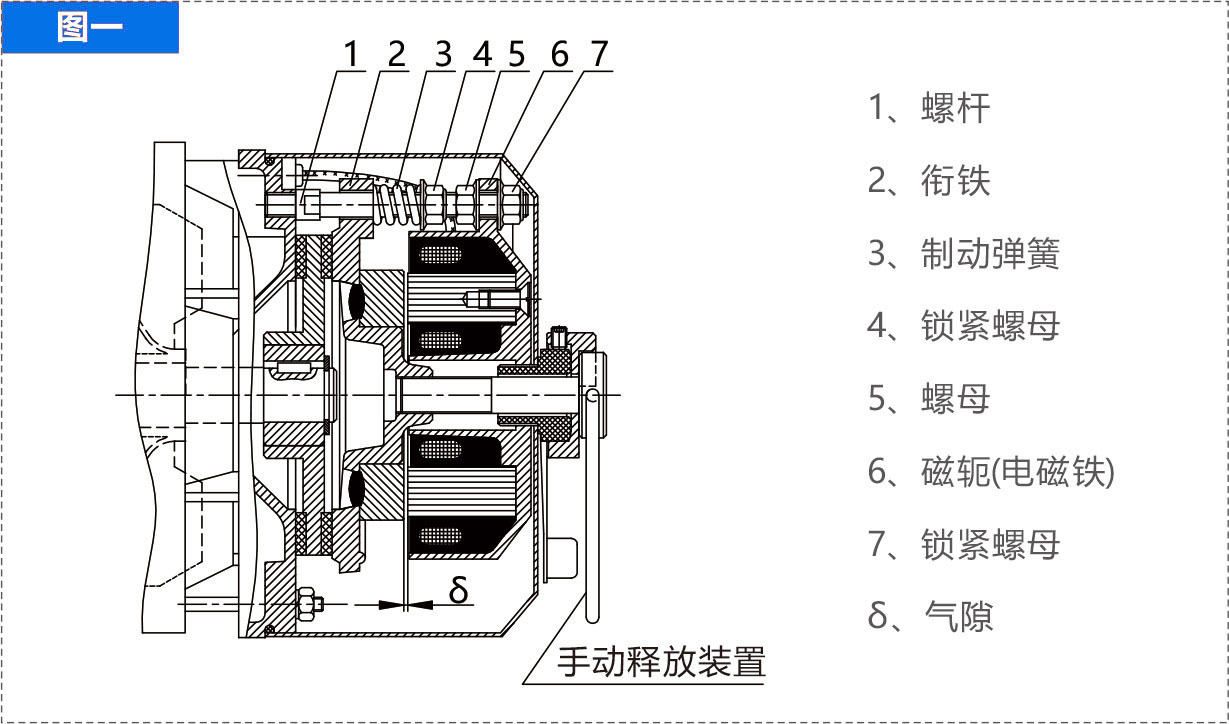
3. Air gap adjustment
Prepare a set of feeler gauges. Select the thickness according to the initial operating air gap value in Table 1. As shown in Figure 1, loosen the nut 5, place the feeler gauge into the air gap (δ) at the edge of the loosened screw, slowly screw in the lock nut 7, tighten the feeler gauge, then tighten the nut 5 outwards, and remove the feeler gauge. Use the same method to adjust the air gap at the second and third screws. After adjustment, tighten the nut 5 and the lock nut 7 again, and check regularly for loose nuts.
The brake screws of YEJA132 and above motors have 6 sets. Following the above method, three sets can be adjusted first at 120° intervals, and then the other three sets. The three points of air gap adjustment must be even, otherwise it will affect the engagement and braking of the brake, and in severe cases, it will burn out the coil. If there is no regular feeler gauge, similar thickness iron sheet can be used instead.
4. Torque adjustment
When the air gap is normal and the braking torque does not reach the rated braking torque, the three safety nuts 4 (six for models 132 and above) can be uniformly screwed forward to compress the braking spring 3, which can increase the braking torque, but not too much. It only needs to reach the rated braking torque on the nameplate. Too much spring pressure will cause difficulty in engagement, or produce unpleasant squeaking electromagnetic sounds, and in severe cases, it will burn out the coil.
-
Serial Number Malfunction Phenomenon Inspection Location and Method Troubleshooting Measures 1 Brake does not engage,
Severe vibration
and a squealing sound(1) As shown in Figure 1, check if nut 5 is loose;
(2) Measure whether the air gap (δ) exceeds the operating air gap value;
(3) Use a multimeter to measure the resistance of the three-phase windings to see if they are basically equal and whether there is any disconnection;
(4) Use a multimeter AC voltage 500V range to check if there is any phase missing in the three-phase AC power supply input;
(5) Braking torque exceeds the rated value by too much;
(6) Check if there are foreign objects stuck on the suction surface or if there is dry oil fouling accumulated on it, causing the surface to be uneven;
(7) The suction surface becomes uneven after long-term use;(1) Tighten nut 5;
(2) If the air gap (δ) is too large, adjust it to the initial operating air gap range;
(3) Repair or replace the yoke if there is a disconnection;
(4) Identify and resolve the issue;
(5) Adjust the braking spring compression length to control the braking torque;
(6) Remove foreign objects and oil fouling;
(7) Use a lathe or surface grinder to smooth the surface;2 Brake ineffective, poor braking performance (1) Friction pad wear, increased operating air gap, reduced torque;
(2) Friction pad damage;
(3) Load inertia is too large, exceeding the braking torque;(1) Re-adjust the air gap (δ);
(2) Replace the friction disc with a new one;
(3) Re-select the motor model.3 Motor overheating (1) Overload, exceeding the rated current;
(2) Using a variable frequency drive power supply, using it for too long at low frequency;
(3) Check if there are any cotton, yarn, paper scraps, etc., blocking the cooling air source at the motor air intake and on the fan blades;
(4) Check if there is any phase missing in the power supply and motor.(1) Reduce the load and keep it within the rated load, or reconsider the motor selection;
(2) Install an additional fan;
(3) Remove cotton and other debris from the motor air intake and fan blades;
(4) Repair as needed.4 The shaft cannot rotate after manual release (1) The friction disc is stuck by oil (from the gearbox or other places).
(2) The brake has not been used for a long time, and the friction pads on the motor end cover are rusted.(1) Disassemble and remove the friction disc, wipe it dry, and then reassemble.
(2) After disassembly, remove rust stains and reassemble for normal operation. -
File Name Size Upload Date Details YEJA Series AC Electromagnetic Braking Three-Phase Asynchronous Motor 858KB 2021/3/10 Click to Download Operation Video 100M 2021/3/10 Click to Download
Related Products
Message
If you have any questions, please contact us!

